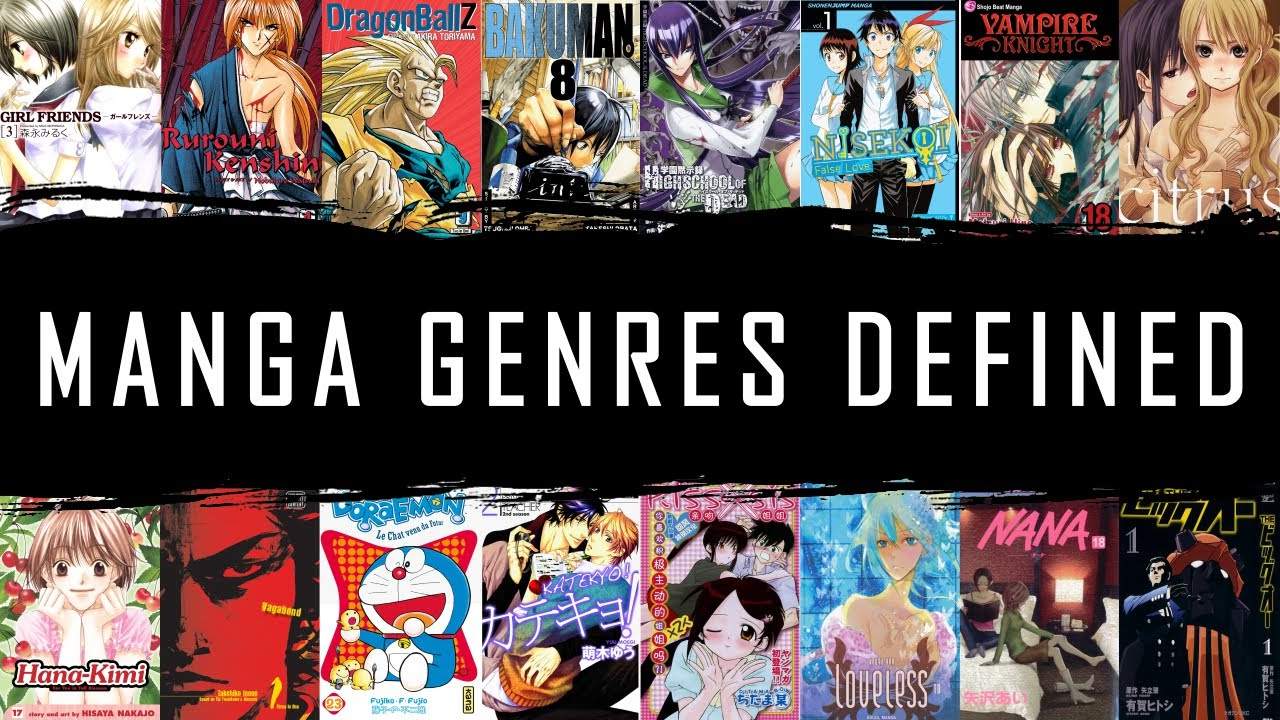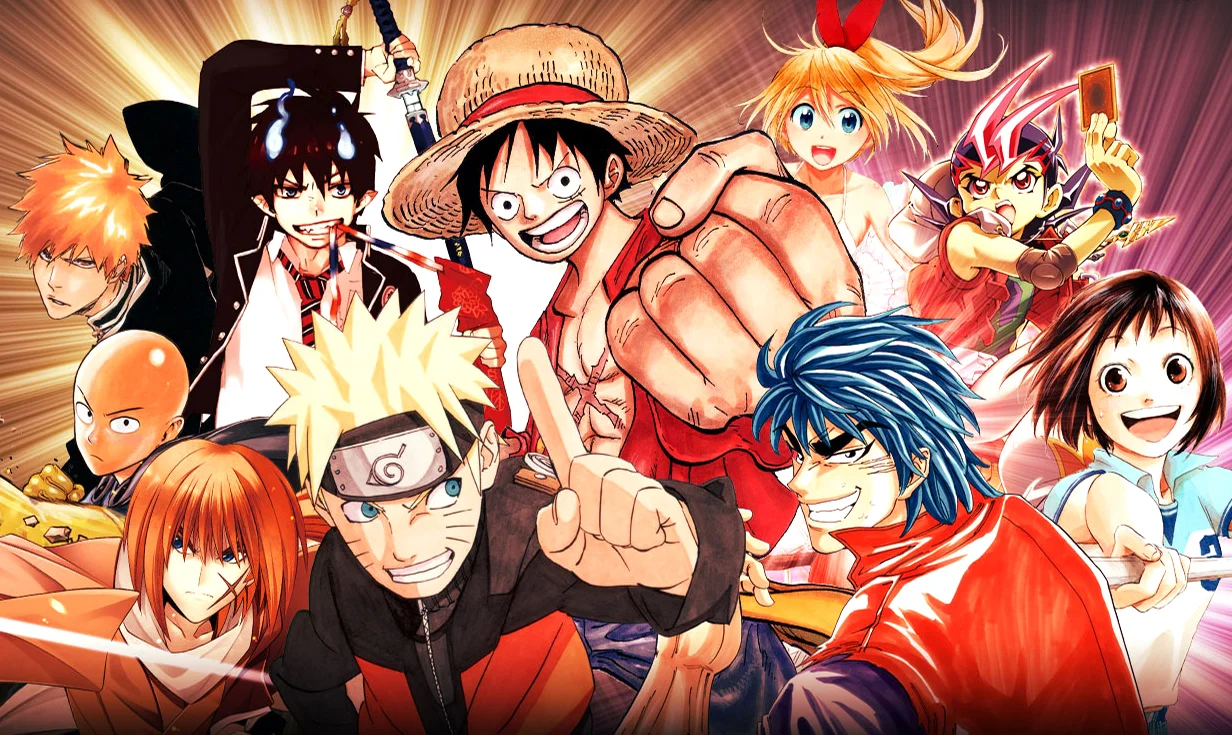Manga genre? Yo, that’s a whole universe, dude! From the epic battles of shonen to the heart-wrenching romances of shojo, we’re diving deep into the wild world of manga categories. Get ready to explore the history, the tropes, and the total radness of all the different manga styles out there. It’s gonna be epic!
We’ll break down the main genres—shonen, shojo, seinen, josei—and show you how they’re different, plus how they sometimes totally mash up into awesome genre hybrids like isekai or mecha. We’ll even peep the art styles, the storytelling tricks, and how all that stuff works together to create totally killer manga.
Manga Genre: A Deep Dive into the World of Japanese Comics
Yo, manga fans! Let’s break down the wild world of manga genres. From the epic battles of shonen to the heart-wrenching romances of shojo, we’re diving deep into the categories, hybrids, and everything in between that makes manga so awesome.
Defining “Manga Genre”
Manga genres aren’t just labels; they’re blueprints for storytelling. Over time, these classifications evolved from simple categories like “adventure” or “romance” to more nuanced systems reflecting the diverse range of themes and styles. Publishers often use broad categories for marketing, while fans delve into much more specific subgenres based on narrative elements and artistic styles. This leads to interesting differences in how genres are categorized and perceived.
Some manga masterfully blend genres, defying easy classification and pushing creative boundaries.
Key Characteristics of Major Manga Genres
Each major genre has its own distinct vibe. We’ll explore the defining features of each, highlighting the common tropes and narrative structures that make them unique.
| Genre | Description | Examples | Target Audience |
|---|---|---|---|
| Shonen | Action-packed adventures, often featuring heroic protagonists and epic battles. | One Piece, My Hero Academia, Naruto | Young boys |
| Shojo | Focuses on romance, relationships, and the emotional journeys of female protagonists. | Sailor Moon, Fruits Basket, Maid Sama! | Young girls |
| Seinen | More mature themes, complex characters, and often darker storylines. | Berserk, Vinland Saga, Monster | Young men |
| Josei | Realistic portrayals of adult women’s lives, dealing with complex relationships and societal issues. | Honey and Clover, Chihayafuru, Princess Jellyfish | Adult women |
Popular Manga Genres: A Detailed Look
Let’s dive deeper into the four major genres, exploring their history, cultural influences, and what makes them tick.
Shonen Manga: A Historical and Cultural Perspective
Shonen manga’s popularity stems from its emphasis on action, adventure, and overcoming challenges. Influenced by classic adventure stories and Japanese folklore, it’s become a global phenomenon.
Shojo Manga: Tropes and Narrative Structures
Shojo manga often explores themes of love, friendship, and self-discovery. Common tropes include dramatic romantic entanglements, close friendships, and the pursuit of personal growth.
Seinen Manga: Appeal and Characteristics, Manga genre
Seinen manga distinguishes itself through its complex narratives, mature themes, and realistic portrayals of characters. It often explores darker aspects of life, contrasting sharply with the more optimistic tone of shonen.
Josei Manga: Defining Elements and Target Audience
Josei manga offers a unique perspective on the lives of adult women, tackling complex issues and relationships with sensitivity and realism.
- Shonen Art Style: Dynamic action poses, bold lines, and often exaggerated features.
- Shojo Art Style: Softer lines, more detailed backgrounds, and emphasis on expressive eyes.
- Seinen Art Style: Varies greatly, but often features more realistic proportions and detailed shading.
- Josei Art Style: Realistic proportions, detailed backgrounds, and a focus on conveying emotions subtly.
Genre Hybrids and Subgenres: A World of Possibilities
Many manga seamlessly blend genres, creating unique and engaging narratives. The rise of subgenres like isekai (another world) and mecha (giant robots) demonstrates the constant evolution of manga storytelling.
Examples of Successful Genre-Blending Manga

Many popular manga titles successfully combine elements from different genres, creating unique and compelling stories. For instance, a romance manga might incorporate elements of fantasy or mystery, while a sci-fi manga could feature strong romantic subplots.
| Genre Combination | Defining Features | Examples |
|---|---|---|
| Romance + Fantasy | Blends romantic relationships with magical elements and fantastical settings. | Fruits Basket |
| Action + Comedy | Combines high-octane action sequences with humorous elements. | Gintama |
| Mystery + Horror | Creates suspense and thrills through a blend of mystery and horror elements. | Another |
| Sci-Fi + Action | Combines futuristic settings with action-packed plots. | Attack on Titan |
The Impact of Genre on Storytelling
Genre conventions heavily influence plot structure, character development, and narrative pacing. Understanding these conventions helps both creators and readers to better appreciate the choices made in storytelling.
Genre Conventions and Narrative Devices
Genres dictate the use of specific narrative devices, like foreshadowing or cliffhangers, to create specific effects on the reader. Shonen, for example, often utilizes dramatic cliffhangers to keep readers hooked, while Josei might rely on subtle foreshadowing to build suspense.
- Shonen: Fast-paced, action-heavy, with frequent cliffhangers.
- Shojo: More deliberate pacing, focusing on character development and relationships.
- Seinen: Varies greatly, but often features a slower, more methodical pace.
- Josei: Often features a realistic pace, reflecting the natural flow of life.
Visual Representation of Genre
The visual aspects of manga are intrinsically linked to genre. Color palettes, panel layouts, and character designs all contribute to the overall tone and atmosphere.
Artistic Styles and Genre Conventions
Visual cues immediately signal a particular genre to the reader. The use of bold lines and dynamic action poses in shonen manga, for instance, contrasts sharply with the softer lines and more detailed backgrounds often found in shojo manga. These visual differences are not arbitrary; they are carefully chosen to reinforce the genre’s conventions and enhance the overall reading experience.
A Visual Contrast: Shonen vs. Josei
Imagine two panels side-by-side. One, a vibrant shonen scene: a hero in a dynamic pose, muscles bulging, background lines suggesting intense motion. The color palette is bright, saturated, and energetic. The other panel, a josei scene: a woman sitting thoughtfully in a softly lit cafe, her expression contemplative. The colors are muted and realistic, the background detailed and evocative of a quiet atmosphere.
When investigating detailed guidance, check out manga forest now.
The stark contrast between these two styles immediately communicates the different genres and their associated moods.
So, there you have it, a total breakdown of the manga genre scene! From classic styles to crazy genre blends, the world of manga is constantly evolving, and the possibilities are endless. Whether you’re a seasoned manga reader or just starting out, hopefully this deep dive has helped you appreciate the diverse and awesome landscape of manga genres. Now go forth and read some awesome manga!

